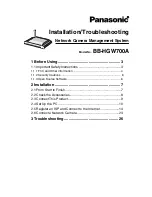
DANGER
The P.T.O retaining chains must be connected
to prevent the outer guard from rotating with
the P.T.O shaft
5.3 Transporting (Traversing) the GBS 1200 Verticutter
1. Raise the GBS 1200 clear of the turf (ground).
2. Disengage the P.T.O
3. Drive smoothly to your next destination. Avoid excess speed,
especially over rough or uneven ground.
5.4 Verticutting
1. Set the depth of cut via the 2 height adjustment screws (0986), as
described in 5.2, at the approximate desired depth. Normal range
of cut (with standard 210mm blades) is 0mm to 45 mm deep.
2. Start the tractor, raise the Verticutter clear of the turf and with the
engine at idle gently engage the P.T.O
3. Set the P.T.O. speed to 540 rpm – maximum revs.
4. Gently lower the GBS 1200 to the ground and allow the rotating
blades to pull themselves into the turf.
5. Make a test cut on level ground of a few metres and check that the
Verticutter is cutting to a consistent depth across the full width of
the cut.
6. Adjust the height adjustment screws (0986) at the rear of the
machine if the blade depth is not even across the machine.
7. Repeat the short test cut and verify that the cut is even across the
Verticutter and that the depth of cut is satisfactory.
8. Forward speed will be determined by such variables as: depth of
cut, soil hardness, soil texture, moisture content of soil, degree of
thatch, smoothness of ground, etc. If you are only lightly
dethatching then a forward operating speed of 5 - 10 kmh should
be achievable. Deeper cutting requires slower operation.
Experience will establish your optimal operating speeds at different
cutting depths.
9. In general, you should start with the tractor gear set to Low 2. From
this setting you can work out if you can operate at a higher gear, all
the way up to High 1 for light de-thatching.
10. Steer the tractor in a straight line while the blades are cutting.
Trying to change direction while the blades are in the turf may lead
to a furrowing/scalping action and can put undue stress on the











































